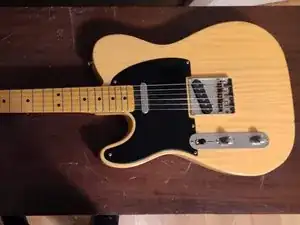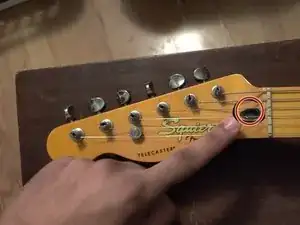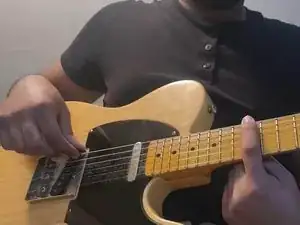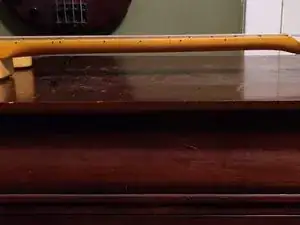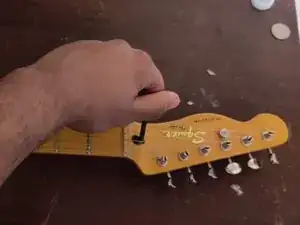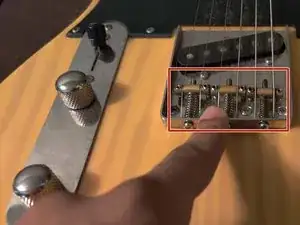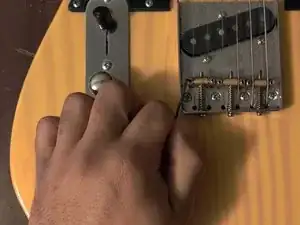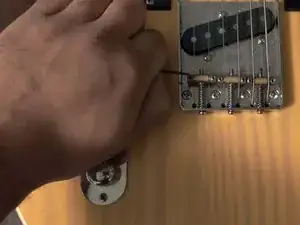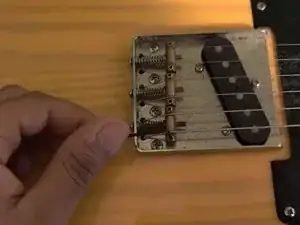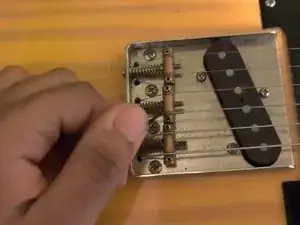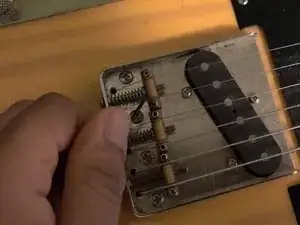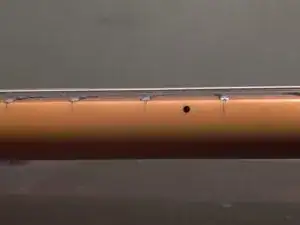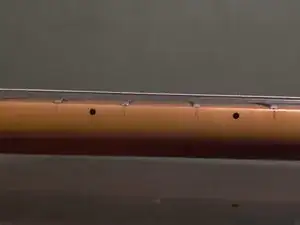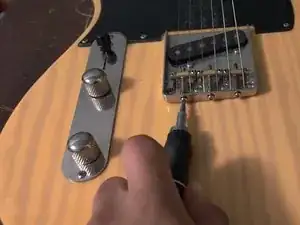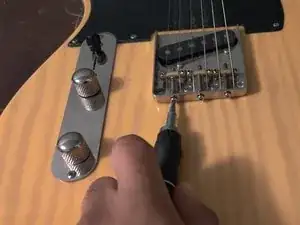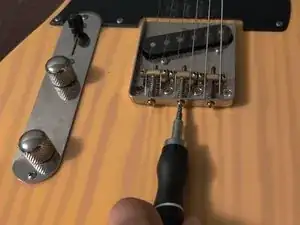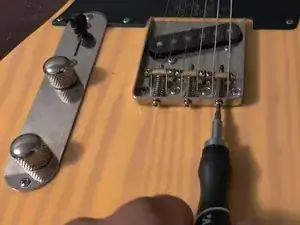Einleitung
Consider adjusting the action and intonation of a guitar or bass if you experience difficulty with fine tuning or string resistance. This guide can help if pressing guitar or bass strings is difficult, or if your instrument’s tone seems off despite being in tune. Adjusting the guitar neck and string action can make playing easier while enriching the instrument’s tone!
Before beginning this guide, detune your guitar strings, leaving room for the strings to be manipulated without snapping.
Werkzeuge
-
-
Locate the truss rod, found either on the headstock, under a plate in the headstock, or on the body towards the base of the neck.
-
-
-
For humped necks, loosen the truss rod by turning the Allen wrench counterclockwise. For bowed necks, tighten the truss rod by turning the Allen wrench clockwise.
-
Use an Allen wrench that can adjust the truss rod.
-
-
-
On the bridge, locate the saddles by finding the spot strings rest on. Raise the action of the saddles by turning the Allen wrench clockwise. Lower the action of the saddles by turning the Allen wrench counterclockwise.
-
-
-
Repeat this process for all strings, adjusting the sides of each saddle evenly so the string won't rest unevenly.
-
-
-
Check guitar intonation by listening to the twelfth fret notes and the twelfth fret harmonic of each string.
-
With a screwdriver, turn the screws below the saddles clockwise if the fretted note sounds higher pitched than the harmonic; turn them counterclockwise if the fretted notes is lower pitched than the harmonic.
-
Now enjoy your guitar!
